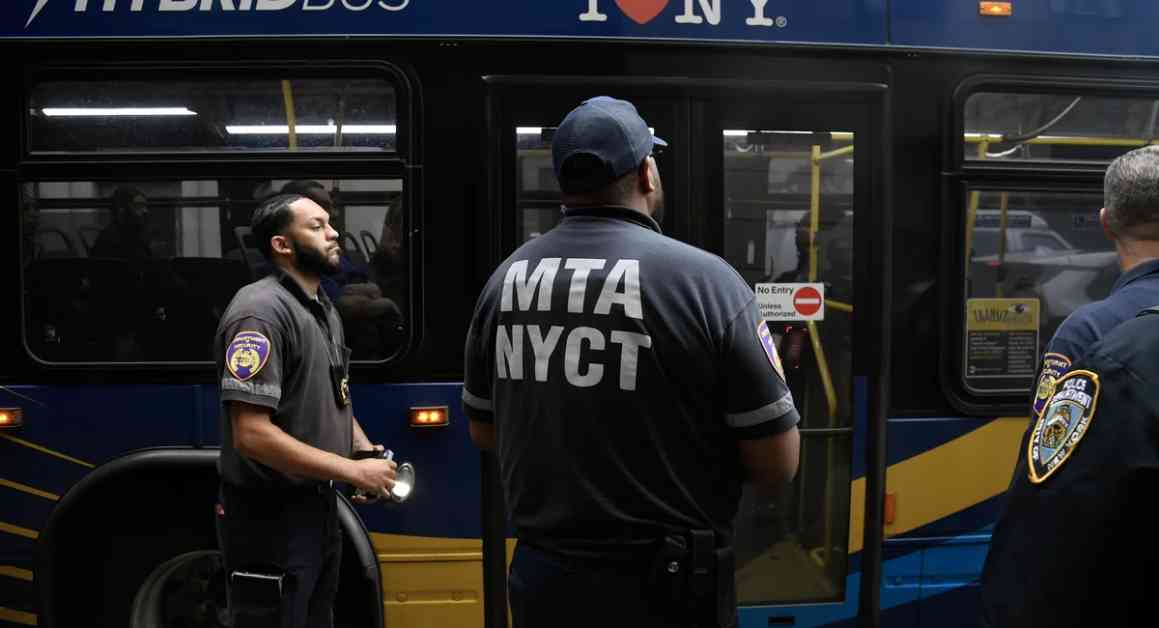MTA officials revealed on Monday that their recent crackdown on bus fare evasion is showing positive early results. Interim NYC Transit President Demetrius Crichlow shared that paid ridership increased by 4.6% on routes where extra fare-enforcement agents were deployed, compared to the rest of the bus system. This improvement was seen in the first two weeks of the enforcement blitz that began in late August, following a report indicating that almost half of the city’s bus riders were not paying the fare in 2024.
MTA Chair Janno Lieber mentioned in a news conference last month that the agency is focusing on 49 different bus routes for their enforcement efforts. In August, police officials stated that they would target specific areas where fare evasion was rampant on buses.
The operation involves MTA “EAGLE” team members, unarmed guards responsible for enforcing the fare, collaborating with NYPD officers at 82 locations per week during rush hour. These team members keep a close eye on the back doors of buses, which are common entry points for fare evasion, to prevent riders from boarding without paying. Additionally, plainclothes EAGLE agents have been deployed to ride buses discreetly and identify fare evaders. If someone is caught trying to evade the fare, the agents remove them from the bus at designated “central locations” where NYPD officers are present.
MTA officials believe that this approach targets the root of the issue by addressing the culture of fare evasion. With a visible presence of enforcement personnel, individuals are less likely to attempt to avoid paying the fare, as noted by Crichlow during an MTA committee meeting.
To support these efforts, New York Gov. Kathy Hochul allocated funds in the state’s budget to hire over 100 new EAGLE staff for the upcoming fiscal year. Currently, the MTA has more than 200 EAGLE team members, with ongoing recruitment and training for new hires.
Over the years, transit officials have emphasized that fare evasion is more prevalent on buses compared to the subway. The MTA estimates an annual loss of approximately $700 million due to fare evasion on transit and tolls for bridges and tunnels.
In a recent initiative, the MTA launched an ad campaign aimed at discouraging fare evasion, particularly in 202 subway stations near busy bus routes. Digital signs display messages such as “A fare is required to ride, MTA fare inspectors and the NYPD are enforcing the fare payment.”
Crichlow and other MTA officials often attribute the surge in bus fare evasion to a five-month period during the peak of the COVID-19 pandemic when bus service was free. Since 2021, the rate of bus fare evasion has nearly doubled, partly due to the temporary fare suspension.

